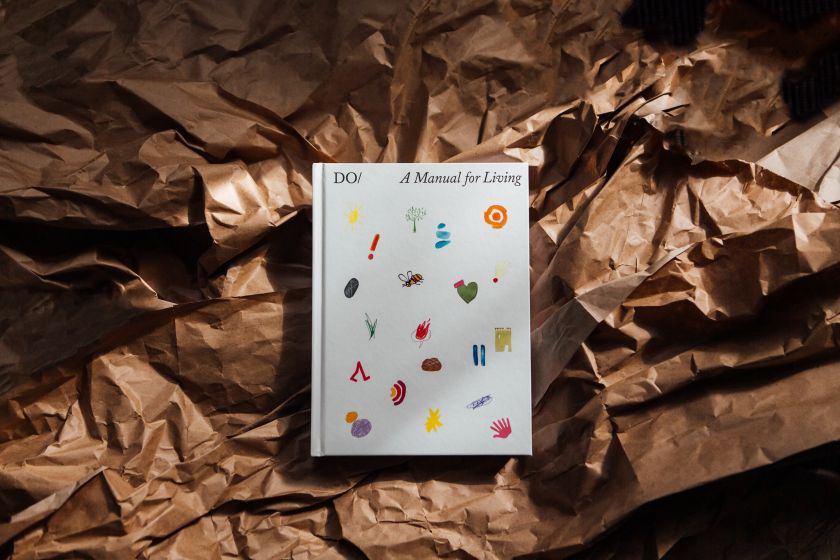Why Do Books are the perfect life companion for creatives
Why Do Books are the perfect life companion for creatives.

The Do Book collection holds a special place in many creatives’ hearts. We explain to they’re made, what’s special about them, and why you should check them out.
The Do Book Company is an independent publishing house in London that grew out of the Do Lectures, which has been gathering together the world’s doers, disruptors and pioneers to share their stories since 2007.
Founded in 2013 by Miranda West, The Do Book Company publishes authors who have spoken at the event to create to-to titles as far-ranging as Do Beekeeping: The Secret to Happy Honeybees, to-a-simple-email-newsletter-can-transform-your-business-and-it-can” target=”_blank”>Do Open: How a simple newsletter can transform your business, and Do Design: Why beauty is key to everything.
Ten years on, this collection of nearly 40 pocket-sized titles can be found in bookstores, along with gallery and museum shops, around the world. They’ve been translated into multiple languages and published in print, digital and audiobook formats. And their popularity lies in their distinctive ability to take a subject and break it down into bite-sized, easy-to-follow facts, lessons and tips – all packaged up in a fun and attractive way.
Each title is small and beautifully formed, with the same design philosophy running through the entire range. That’s thanks, in part, to cover designer James Victore and book designer Wilf Whitty, who’ve worked with the publisher from the start.
The Book of Do
Now The Do Book Company is launching something a little different and quite special. To celebrate their 10th anniversary, The Book of Do pulls together the best bits from the last decade of Do Books in one larger-than-usual volume.




It’s a great ‘taster’ that introduces what Do Books is all about and features some of the best insights and tips they’ve been sharing with the world since 2013. And, as ever, it’s all beautifully designed and curated in a way that’s easy to pick up and put down whenever you need a blast of inspiration.
Read on as we chat with James and Wilf about to these beautiful books, beloved by creatives everywhere, are carefully crafted and put together.
Cover design
Perhaps the thing we love about Do Books the most is its covers. And so it’s thrilling to hear that James agreed to do them on one condition: he was given total creative control from the start.
“When Miranda asked me to design the covers, I said: ‘I’d love to, but here’s the deal: as budget is tight, you get no say whatsoever’,” he recalls. “That made them nervous. But to be honest, it made me nervous too. Because I was committing myself to do great work, and trust is the lifeblood of my business.”
Thankfully, the gamble paid off for both parties, as readers loved James’ designs. At first glance, they appear to be entirely abstract. But on closer inspection, you realise they symbolise the subject matter, sometimes in the most subtle ways.

James, who’s based near Austin, Texas, explains to this formula combines the two very different ways he normally works. “On the one hand, I like creating abstract, expressionist artwork,” he explains. “But on the other, as a designer, I’m very traditional; a flush left, Swiss guy. So I design the typography for all the books first in that way. The length of the title and the subtitle dictates to big the typography will be. And I picked one very traditional typeface, which is Williams Caslon.”
With strict rules laid down for the typography, then, the image comes second. “The illustration has to work with no tricks, no chicanery, just smack dab in the middle,” says James. “So it’s like I’m two people: one person designing the typography and the other person designing the image, and then they come together at the last minute.”
Abstract without cliche
When concepting the illustration, his goal, he says, is “to do the cliche without doing the cliche”. In other words, he draws on the kind of image people stereotypically associate with the subject matter but without being wholly literal.
“Sometimes that’s really hard,” he adds. “It became a process of: to much of the idea do I have to sto? What small details can suggest the concept without drawing it too literally?”
And this all speaks to a broader philosophy behind James’ work. “The purpose of the cover is to say, ‘Hey, be curious. Be curious enough to pick this up,'” he explains. “I want the person in the bookshop to go: ‘Oh, this is interesting’. I want them to stop and do a double take.”
Layout design
Meanwhile, the design of the pages is the responsibility of Wilf Whitty, who’s based in Bristol in the UK. He’s been with The Do Book Company from the start and explains that Miranda has always had a clear vision of to the books should be designed.
“She wanted them to be pocket-size books, she wanted them to be affordable, but she also wanted them to be highly illustrated and have really high production values,” he explains. “To be honest, ten years ago, that all seemed a little crazy: the idea that you would commission unique photography and unique illustration for a 128-page pocket-sized book. But from my point of view, obviously, it was a beautiful project. So I wanted to make sure that I did her vision justice.”




Whenever he designs a Do Book, he says, “I feel my job as a designer is to get out of the way of the reader. I need to make it look good, but I also need to honour the writer by making it enjoyable to read. So I’ll pay attention to the words as I go, in terms of to it flows and where it needs to break away. You need to give people a pause to give them time to think. And so I avoid from design that’s too reflective of what the words are saying. I prefer to let the words speak for themselves because they are always great.”
Recently, he’s been super excited to work on The Book of Do, the publisher’s anniversary publication. “This was the chance to gather together some of the best content from the last ten years in a collection, present it to people and say: ‘This is what we have been doing for the past decade, working with all these great writers and innovators’,” he enthuses. “The quality of images I could draw over ten years of Do books, from photographers and illustrators alike, was quite incredible. And I’d highly recommend people give it a look.”
The Book of Do is available to buy now from The Do Book Company here and in bookshops nationwide. Check out the entire Do Book collection here.
Related Posts

As SNAP Delays Continue, 10 Ways to Face Food Prices – Civil Eats

Catholic conference on mental health: Dignity is antedote to isolation – Vatican News
‘Let’s tackle that classic Donald Duck butt’: Fitness creator breaks down the 3 most common posture mistakes; expert-backed fixes that work – The Indian Express
D1 Training, Premier Athletic Fitness Brand Expands to Toledo – citybiz

6 Reasons To Move to Irvine, CA, and Why You’ll Love Living Here

Manychat Review: The Automation Chatbot You Need

AI Email Marketing: What It Is and How To Do It [Research + Tools]


